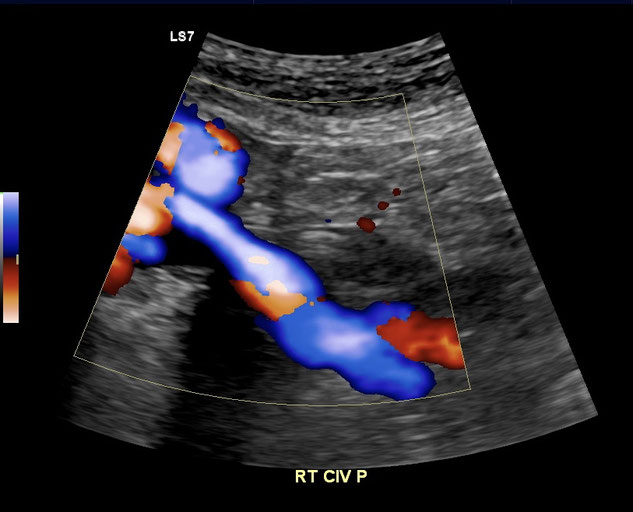- Home
- Why Truffles?
- Blog
- You Can't Run from Vein Disease
- VenaSeal
- Summer is Almost Over
- IDK about Vein Disease
- Vein Treatment Fayetteville
- Sonography to RN Degree Program
- Vein Testing Differences
- Advantage of Vein Treatment Before Knee Surgery
- Poor Medical Advice
- Green Tomatoes for Varicose Veins
- VenaSeal Treatment Atlanta
- Fake News
- Iliac Vein Compression
- Vein Treatment
- DVT
- Pelvic Health
- Sclerotherapy
- leg swelling
- The Vein Specialists
- Vein Treatments
- What is Vein Disease
- Vein Conditions
- Vascular Testing
- Look and Feel Your Best!
- Reviews
- Media
- Contact Us
- Schedule and Appointment
- Free Vein Screening
- Give Us Feedback
- Referral Resources
- Make a Payment
Iliac vein compression - May Thurner Syndrome

There are many symptoms that are indicative of a pelvic / abdominal vein obstruction. A pelvic vein obstruction can cause unexplained leg pain or swelling, pelvic pain, or leg ulcers which are difficult to heal. The leg pain or swelling often becomes worse with exercise because of the increased flow of blood into the legs with exercise. This increased blood flow into the legs results into a larger volume of blood which must flow out of the legs and may also cause pelvic pain as other veins enlarge in the pelvis to carry blood around the obstruction.
Some patients with a pelvic vein obstruction experience little leg pain or swelling, but they describe pain in the pelvis. The pelvic pain may be intermittent or constant, often with changing degrees of discomfort. Pain with or shortly after intercourse (dyspareunia) may be due to problems with the uterus or reproductive organs such as an ovarian cyst, endometriosis, or infection. However, some patients who experience pelvic pain or dyspareunia have varicose veins in the pelvis carrying blood flow around obstructed veins in the pelvis or abdomen.
The most common cause of pelvic vein obstruction is compression of the iliac vein in the pelvis as it carries blood flow out of the leg and pelvis. Iliac vein compression often occurs because the iliac vain is squeezed between the iliac artery and the spine. Other causes of compression may include an ovarian or uterine cyst or growth or, occasionally, cancer in the pelvis or abdomen.
Pelvic vein obstruction can also happen in those who have had previous clotting (deep vein thrombosis) involving the iliac veins. A deep vein thrombosis may result in complete obstruction of the iliac veins or it may result in partial obstruction as the clot partially resolves, leaving behind a narrowed vein or webs within the vein which limit blood flow back to the heart.
A few patients develop obstruction of the inferior vena cava (IVC), the larger vein which passes in the deep abdomen from about the level of the navel (umbilicus) to the heart. Most obstructions of IVC are due to clotting and/or scarring at the site of an IVC filter. An IVC filter is a small metallic device implanted by a needle stick technique through the groin or neck into the IVC at the level at the mid-abdomen. The purpose of the IVC filter is to prevent large clots (thrombi) from moving with blood flow to the lungs where they can block blood flow through the lungs, sometimes with lethal consequences. Other causes of IVC obstruction include extensive clotting (venous thrombosis) or tumor growth. Truffles Vein Specialists has technologists that are skilled in detecting these disorders and relationships with the leaders in the is field nationally.
